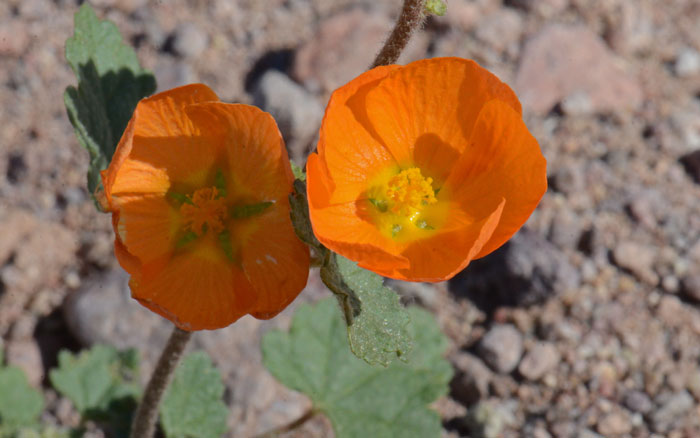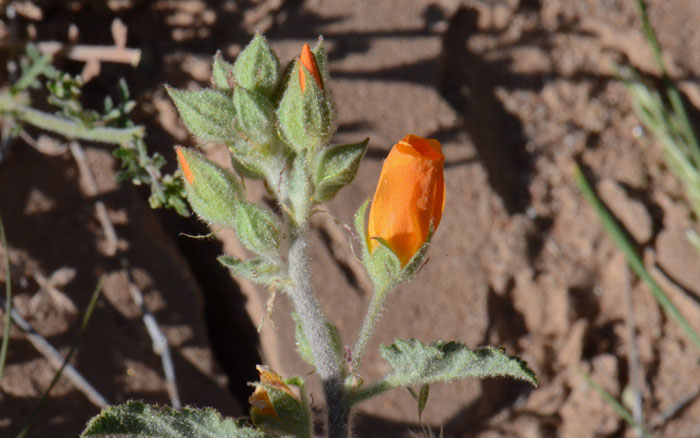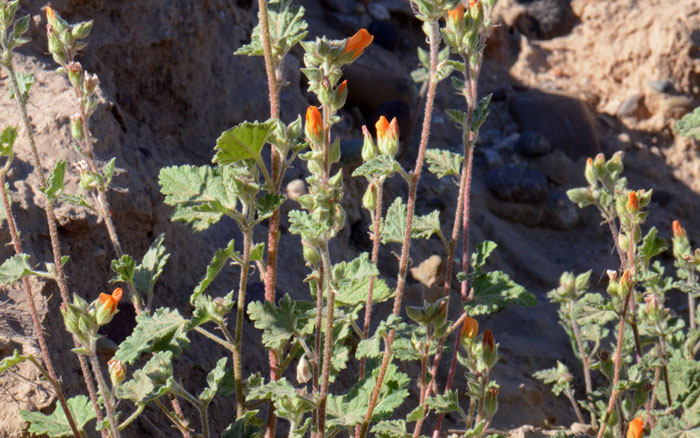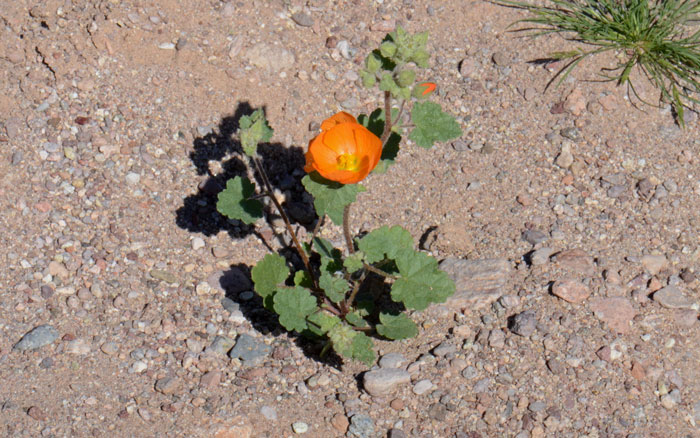Sphaeralcea coulteri, Coulter's Globemallow




Scientific Name: Sphaeralcea coulteri
Common Name: Coulter's Globemallow
Also Called: Annual Globemallow, Coulter Globe Mallow, Coulter Globemallow, (Spanish: Mal de Ojo)
Family: Malvaceae, Globe Mallow Family
Synonyms: ()
Status: Native
Duration: Annual
Size: Up to 4 feet more or less.
Growth Form: Forb/herb, subshrub; stems slender, few long soft hairs, stems sprawling to erect.
Leaves: Green, gray-green; leaves variable triangular, cordate, 3 or more lobes, margins rounded and coarsely toothed.
Flower Color: Orange, red-orange, salmon-orange; flowers in long narrow clusters from axils, anthers yellow, fruit a schizocarp with 15 segments each containing 1 seed.
Flowering Season: January to May or later in Arizona and Texas, March to May in California.
Elevation: Up to 2,500 feet below 1,000 feet in California.
Habitat Preferences: Roadsides, fields, mesas, dry sandy desert flats.
Recorded Range: Coulter's Globemallow is relatively rare in the United States. It is native to AZ and CA. In Arizona it occurs in the central and south and southwest part of the state in Maricopa, Pima, Pinal and Yuma Counties. In California it is found mostly in Imperial County. Coulter's Globemallow is also native to Baja California and northern Mexico.
North America & US County Distribution Map for Sphaeralcea coulteri.
U.S. Weed Information: No information available.
Invasive/Noxious Weed Information: No information available.
Wetland Indicator: No information available.
Threatened/Endangered Information: No information available.
The Plant List includes 170 scientific plant names of species rank for the genus Sphaeralcea. Of these 53 are accepted species names.
Comments: In years with abundant rainfall, Coulter's Globemallow is capable of carpeting large areas with beautiful orange, red-orange or salmon-orange flowers. This is primarily a Sonoran Desert species associated with creosote bush communities that is an important resource for honey bees and other insects and hummingbirds.
In Southwest Desert Flora also see: Desert Globemallow, Sphaeralcea ambigua; Scarlet Globemallow, Sphaeralcea coccinea; Fendler’s Globemallow, Sphaeralcea fendleri; and Rusby's Globemallow, Sphaeralcea rusbyi.

